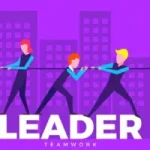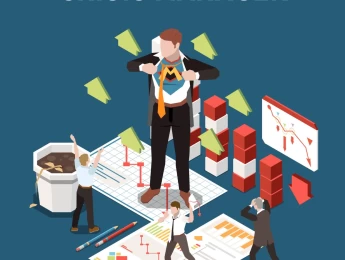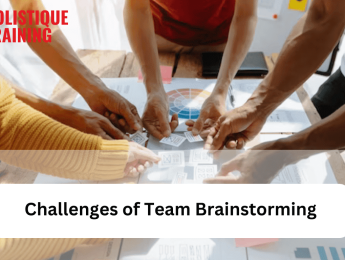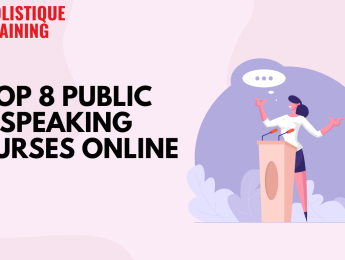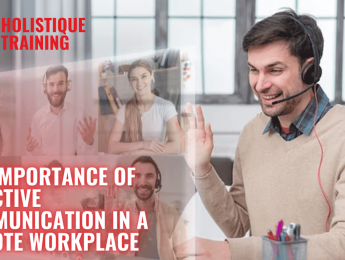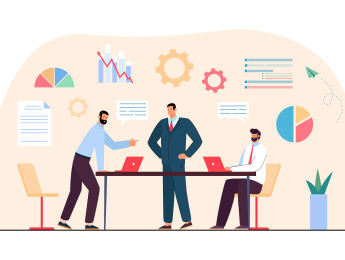- Table of Contents
- Competency 1: Adaptability
- Competency 2: Digital Literacy
- Competency 3: Emotional Intelligence
- Competency 4: Critical Thinking and Problem-Solving
- Competency 5: Communication Skills
- Competency 6: Collaboration and Teamwork
- Competency 7: Innovation and Creativity
- Competency 8: Leadership and Initiative
Introduction
In the rapidly evolving landscape of 2025, employee competencies have become more crucial than ever for organizational success. Competencies, encompassing a blend of skills, behaviors, and abilities, are the driving force behind an employee's effectiveness and productivity. As businesses grapple with technological advancements, shifting market dynamics, and changing consumer expectations, the ability of their workforce to adapt, innovate, and excel in key areas becomes paramount. These competencies are not just about meeting the present demands but also about anticipating future challenges and opportunities. In this context, fostering the right competencies ensures that teams are resilient, agile, and well-equipped to navigate the complexities of the modern business environment. As we delve into the specific competencies that will define successful teams in 2025, it becomes clear that organizations must prioritize continuous learning and development to stay competitive and thrive in this new era.
Competency 1: Adaptability
Adaptability, defined as the ability to adjust to new conditions, environments, and challenges, is a critical competency for employees in 2025. This competency is indispensable in a business landscape characterized by rapid technological advancements, fluctuating market dynamics, and evolving consumer demands. Employees who exhibit adaptability are able to maintain productivity and innovation even in the face of uncertainty and disruption. Their flexibility and resilience enable them to pivot quickly and effectively, ensuring that their organizations remain competitive and responsive to change.
To cultivate adaptability within teams, organizations must adopt a holistic approach:
- Encourage Continuous Learning and Professional Development
- Regular training sessions and workshops
- Access to online learning platforms
- Staying current with industry trends and acquiring new skills
- Provide Opportunities for Diverse Projects and Cross-Functional Teams
- Broaden experience and enhance flexibility
- Foster a proactive mindset
- Promote a Culture that Embraces Change and Innovation
- Create a safe environment for experimentation and calculated risks
- Understand failures as opportunities for growth
- Leadership modeling adaptable behavior and encouraging a growth mindset
- Recognize and Reward Adaptable Behavior
- Reinforce the importance of adaptability
- Motivate employees to seek continuous improvement and innovation
- Offer Specific Training Programs on Resilience and Change Management
- Scenario-based training and simulations
- Workshops on coping strategies
- Building mental and emotional fortitude to handle stress and uncertainty
- Provide Mentorship and Coaching
- Personalized guidance and support
- Enhance employees' ability to adapt
- Foster Open Communication and Feedback Channels
- Ensure employees feel heard and supported during times of change
- Create a collaborative environment for sharing experiences and learning from one another
Aspect | Details |
1. Encourage Continuous Learning | - Regular training sessions and workshops- Access to online learning platforms- Stay current with industry trends |
2. Provide Diverse Project Opportunities | - Broaden experience through varied projects- Enhance flexibility with cross-functional teams |
3. Promote a Culture of Change | - Create a safe environment for experimentation- View failures as growth opportunities- Model adaptable behavior |
4. Recognize and Reward Adaptability | - Reinforce the value of adaptability- Motivate continuous improvement and innovation |
5. Offer Training on Resilience | - Scenario-based training- Workshops on coping strategies- Build mental and emotional fortitude |
6. Provide Mentorship and Coaching | - Offer personalized guidance- Enhance adaptability through support and feedback |
7. Foster Open Communication | - Ensure employees feel heard- Create collaborative environments for shared learning and feedback |
Summary Table: Adaptability Competency
By investing in these strategies, organizations can cultivate a workforce that is not only resilient and agile but also proactive in seeking and embracing new opportunities, positioning themselves for long-term success in 2025 and beyond.
Competency 2: Digital Literacy
Digital literacy, the competency to effectively use information and communication technologies, is vital in the modern workplace, especially as we move into 2025. This competency encompasses a wide range of skills and knowledge, from understanding basic software applications to leveraging complex digital tools for data analysis and cybersecurity. Digital literacy ensures that employees can navigate the increasingly digital business landscape, enhancing productivity, efficiency, and innovation. Essential digital tools and skills include proficiency with collaboration platforms such as Microsoft Teams and Slack, which facilitate seamless communication and project management. Employees should also be adept at using data analytics and visualization tools like Tableau and Power BI, which enable them to make data-driven decisions. Basic coding and automation skills, along with a robust understanding of cybersecurity practices, are also crucial in protecting organizational data and optimizing processes.
To foster digital literacy within teams, organizations must implement comprehensive training and development programs. These programs should offer a range of learning opportunities tailored to different skill levels and job roles:
- Workshops and Training Sessions on Latest Digital Tools
- Interactive sessions on using collaboration platforms
- Training on data analytics and visualization tools
- Workshops on basic coding and automation
- Access to Online Learning Platforms
- Subscriptions to platforms like Coursera, Udemy, and LinkedIn Learning
- Providing courses on digital literacy, cybersecurity, and emerging technologies
- Participation in Certification Programs
- Encouraging employees to earn certifications in relevant digital skills
- Offering financial support or incentives for completing certification programs
- Creating a Supportive Environment for Experimentation
- Allowing employees to test and integrate new digital tools
- Promoting a culture of continuous improvement and innovation
- Providing Regular Updates and Refreshers on Digital Best Practices
- Keeping employees informed about the latest developments in digital tools and technologies
- Regular training on cybersecurity awareness and best practices
By investing in these initiatives, organizations can ensure that their workforce remains competent and confident in navigating the digital aspects of their roles. This not only boosts individual productivity but also enhances overall organizational efficiency and competitiveness. In a world where digital transformation is a constant, a digitally literate workforce is indispensable for long-term success and innovation.
Competency 3: Emotional Intelligence
Emotional intelligence (EI), the ability to recognize, understand, manage, and influence one's own emotions and the emotions of others, is a pivotal competency for employees in 2025. Key components of EI include self-awareness, self-regulation, empathy, social skills, and motivation. Self-awareness involves understanding one’s own emotions, strengths, and weaknesses, while self-regulation is about managing those emotions effectively. Empathy allows individuals to understand and share the feelings of others, fostering better interpersonal relationships. Strong social skills enable effective communication and conflict resolution, and intrinsic motivation drives individuals to pursue goals with passion and perseverance. The benefits of EI for team dynamics are profound; it enhances collaboration, reduces conflicts, and improves overall workplace morale. Teams with high emotional intelligence are more cohesive, resilient, and capable of navigating the complexities of interpersonal interactions.
To enhance emotional intelligence within teams, organizations can implement several methods and strategies:
- Self-Assessment Tools and Feedback Mechanisms
- Utilizing tools like the Emotional Quotient Inventory (EQ-i) to assess individual EI levels
- Providing constructive feedback to help employees understand their emotional strengths and areas for improvement
- Mindfulness and Self-Awareness Exercises
- Encouraging practices such as mindfulness meditation to increase self-awareness
- Implementing regular reflection sessions to help employees better understand their emotional responses
- Empathy and Active Listening Training
- Conducting workshops focused on developing empathy and active listening skills
- Role-playing exercises to practice and enhance empathetic communication
- Conflict Resolution and Communication Skills Development
- Offering training programs on effective communication and conflict resolution techniques
- Teaching employees how to navigate and resolve interpersonal conflicts constructively
- Mentorship and Peer Coaching Programs
- Establishing mentorship relationships where more experienced employees guide others in developing EI
- Promoting peer coaching to provide ongoing support and accountability
- Creating an Emotionally Supportive Work Environment
- Fostering a culture that values emotional expression and open communication
- Encouraging managers to model emotionally intelligent behaviors and provide support
By investing in these methods, organizations can cultivate a workforce that is emotionally intelligent, leading to enhanced team dynamics, increased job satisfaction, and improved overall performance. A focus on emotional intelligence not only builds stronger interpersonal relationships but also drives organizational success by creating a more empathetic, communicative, and resilient workforce.
Competency 4: Critical Thinking and Problem-Solving
Critical thinking and problem-solving are essential competencies that play a crucial role in effective decision-making within organizations in 2025. These skills enable employees to analyze complex situations, evaluate information, and make well-informed decisions that drive business success. Critical thinking involves questioning assumptions, evaluating evidence, and considering multiple perspectives to understand and address problems comprehensively. Problem-solving, on the other hand, requires applying analytical skills to devise effective solutions and implement them efficiently. Together, these competencies ensure that decisions are based on sound reasoning and a thorough understanding of potential outcomes.
To develop critical thinking and problem-solving skills, organizations can employ several strategies:
- Encourage Analytical Thinking and Questioning
- Foster a culture where employees are encouraged to question assumptions and explore alternative viewpoints
- Promote discussions and brainstorming sessions that challenge conventional thinking and stimulate innovative ideas
- Provide Training on Structured Problem-Solving Techniques
- Offer workshops on methodologies such as root cause analysis, SWOT analysis, and decision-making frameworks
- Teach employees how to use tools like flowcharts and mind maps to systematically analyze problems
- Promote Cross-Functional Collaboration
- Create opportunities for employees to work on diverse projects with teams from different departments
- Encourage knowledge sharing and collaborative problem-solving to leverage various expertise and perspectives
- Implement Real-World Case Studies and Simulations
- Use case studies and simulations to provide practical experience in tackling complex problems and making decisions
- Incorporate role-playing scenarios to practice and refine critical thinking and problem-solving skills
- Encourage Continuous Learning and Reflection
- Support ongoing professional development through courses, webinars, and reading materials focused on critical thinking and problem-solving
- Provide regular feedback and reflection opportunities to help employees assess their decision-making processes and outcomes
- Leverage Data and Analytics
- Train employees to use data analytics tools and techniques to inform their decision-making
- Encourage data-driven approaches to problem-solving to enhance accuracy and effectiveness
Real-world applications of critical thinking and problem-solving are evident across various business functions. For example, in strategic planning, these competencies help organizations assess market trends, identify growth opportunities, and formulate effective strategies. In project management, they are crucial for identifying potential risks, developing mitigation plans, and ensuring successful project outcomes. In customer service, critical thinking aids in addressing complex issues and providing tailored solutions that enhance customer satisfaction. By integrating these skills into daily operations, organizations can foster a more adaptive, innovative, and resilient workforce, capable of navigating the complexities of the modern business environment with confidence and agility.
Competency 5: Communication Skills
Communication skills are fundamental to organizational success and encompass a range of abilities essential for effective interaction in the workplace. These skills include verbal communication, which involves clear and articulate speaking; non-verbal communication, which encompasses body language, facial expressions, and gestures; and written communication, which involves crafting coherent and persuasive documents, emails, and reports. Additionally, active listening, which involves fully concentrating, understanding, responding, and remembering what is being said, is a critical component of effective communication. Strong communication skills impact both collaboration and leadership significantly. In collaborative settings, they facilitate clear exchanges of ideas, reduce misunderstandings, and foster a cooperative environment where team members can work towards shared goals effectively. In leadership, effective communication is crucial for articulating vision, providing direction, and motivating teams. Leaders who excel in communication can build trust, inspire confidence, and manage conflicts with greater ease.
To improve communication skills within teams, organizations can implement several techniques:
- Offer Communication Skills Training
- Conduct workshops and seminars focused on enhancing verbal, non-verbal, and written communication
- Include modules on active listening and effective feedback techniques
- Encourage Regular Feedback and Practice
- Create opportunities for employees to practice communication skills through presentations, meetings, and team discussions
- Implement a structured feedback system where colleagues and supervisors provide constructive criticism
- Promote Effective Listening and Understanding
- Train employees in active listening techniques, such as summarizing and clarifying to ensure comprehension
- Encourage practices that emphasize empathy and understanding in conversations
- Utilize Communication Tools and Technology
- Provide training on using communication tools such as video conferencing platforms, collaboration software, and project management tools
- Ensure employees are proficient in utilizing these tools to enhance both virtual and in-person communication
- Foster a Culture of Open Communication
- Encourage open dialogue and transparency within the organization
- Promote an environment where employees feel comfortable sharing ideas, giving feedback, and asking questions
- Implement Communication Skills Assessment
- Use assessment tools to evaluate employees’ communication strengths and areas for improvement
- Offer personalized development plans based on assessment results
By investing in these techniques, organizations can enhance their employees' communication skills, leading to more effective collaboration, stronger leadership, and overall improved organizational performance. Well-developed communication skills contribute to a more cohesive, productive, and engaged workforce, enabling teams to achieve their objectives and leaders to guide their organizations with clarity and confidence.
Competency 6: Collaboration and Teamwork
Collaboration and teamwork are essential competencies that underpin the success of modern organizations, emphasizing the importance of a cooperative work environment where diverse skills and perspectives come together to achieve common goals. A collaborative work environment fosters innovation, enhances problem-solving, and improves productivity by leveraging the collective strengths of team members. In such an environment, open communication, mutual respect, and shared objectives create a synergy that drives better results and fosters a sense of belonging and engagement among employees. Building effective teams involves selecting individuals with complementary skills, establishing clear roles and responsibilities, and cultivating a culture of trust and accountability. Teams that function well together are more adept at navigating challenges, adapting to changes, and delivering high-quality outcomes.
To enhance collaboration and teamwork, organizations can employ several tools and practices:
- Implement Team Building Activities
- Organize regular team-building exercises and workshops to strengthen relationships and improve interpersonal dynamics
- Engage in activities that encourage problem-solving and cooperation
- Establish Clear Goals and Roles
- Define specific, measurable objectives for teams to ensure alignment and focus
- Clearly outline individual roles and responsibilities to avoid confusion and overlap
- Promote Open Communication
- Foster an environment where team members feel comfortable sharing ideas and feedback
- Use communication tools such as Slack or Microsoft Teams to facilitate ongoing dialogue and information sharing
- Leverage Collaboration Tools and Technology
- Utilize project management software like Asana or Trello to track progress, manage tasks, and coordinate efforts
- Implement document sharing and collaboration platforms like Google Workspace or SharePoint to streamline workflows
- Encourage Cross-Functional Collaboration
- Create opportunities for teams from different departments to work together on projects
- Promote knowledge sharing and interdisciplinary problem-solving to enhance creativity and innovation
- Provide Training on Team Dynamics and Conflict Resolution
- Offer training programs focused on understanding team dynamics, managing conflicts, and enhancing collaboration skills
- Teach techniques for effective negotiation and consensus-building
- Recognize and Reward Team Successes
- Celebrate team achievements and milestones to build morale and reinforce the value of teamwork
- Provide incentives and recognition for collaborative efforts and outstanding team performance
By adopting these strategies, organizations can foster a collaborative and effective team environment, driving enhanced performance, creativity, and overall success. Effective collaboration and teamwork lead to more efficient processes, stronger relationships, and a more engaged workforce, ultimately contributing to the organization’s ability to achieve its strategic objectives and maintain a competitive edge.
Competency 7: Innovation and Creativity
Innovation and creativity are critical competencies for thriving in today’s dynamic business environment, driving organizational growth and competitive advantage. Fostering an innovative mindset involves creating a culture that values experimentation, risk-taking, and learning from failure. Encouraging creative thinking requires organizations to provide employees with the freedom to explore new ideas, challenge conventional approaches, and approach problems from novel perspectives. An innovative environment supports and rewards unconventional thinking and actively seeks to break the mold of traditional practices.
To foster an innovative mindset and encourage creative thinking, organizations can implement several strategies:
- Promote a Culture of Experimentation
- Encourage employees to test new ideas and approaches, even if they might fail
- Create safe spaces for experimentation where mistakes are viewed as learning opportunities
- Provide Resources and Tools for Innovation
- Invest in technologies and tools that facilitate brainstorming and idea generation
- Offer access to creative software, prototyping tools, and innovation labs
- Encourage Diverse Perspectives and Collaboration
- Foster cross-functional teams that bring together diverse expertise and viewpoints
- Organize brainstorming sessions and innovation workshops that include a range of participants
- Recognize and Reward Innovative Contributions
- Implement recognition programs that celebrate innovative ideas and successful projects
- Provide incentives such as bonuses, promotions, or public acknowledgment for contributions to innovation
- Offer Training and Development Programs
- Provide training on creative thinking techniques, such as design thinking and lateral thinking
- Host workshops and seminars that focus on enhancing creativity and problem-solving skills
- Support Continuous Learning and Growth
- Encourage employees to pursue learning opportunities outside their primary roles, such as attending industry conferences or taking online courses
- Promote a culture of curiosity where ongoing education and skill development are valued
- Implement Agile and Flexible Work Practices
- Adopt agile methodologies that allow teams to iterate quickly and respond to new ideas and feedback
- Support flexible work arrangements that enable employees to work in environments conducive to creative thinking
Examples of innovation in the workplace include Google’s “20% Time,” which allows employees to spend a portion of their workweek on personal projects that could benefit the company, resulting in products like Gmail and AdSense. Similarly, 3M’s “Innovation Time Off” program encourages employees to dedicate 15% of their time to exploring new ideas, leading to the development of the Post-it Note. By creating an environment where creativity is encouraged and supported, organizations can drive continuous improvement, discover new opportunities, and stay ahead of the competition.
Competency 8: Leadership and Initiative
Leadership and initiative are vital competencies that drive organizational success and foster a proactive, forward-thinking workforce. Key leadership qualities include vision, the ability to inspire and motivate others, decisiveness, and emotional intelligence. Effective leaders not only set a clear direction and articulate a compelling vision but also empower their teams by fostering trust, providing support, and recognizing individual contributions. They demonstrate resilience and adaptability, especially in times of change, and lead by example, setting high standards for performance and integrity. Encouraging initiative among employees involves creating an environment where individuals feel empowered to take ownership of their work, propose new ideas, and drive projects forward without waiting for direct instructions.
To nurture leadership and initiative, organizations can implement several strategies and programs:
- Establish Clear Leadership Goals and Expectations
- Define the qualities and behaviors expected from leaders within the organization
- Communicate these expectations clearly to all employees
- Provide Leadership Development Programs
- Offer training programs that focus on key leadership skills, including strategic thinking, team management, and effective communication
- Include mentorship opportunities where emerging leaders can learn from experienced leaders
- Encourage and Recognize Initiative
- Create opportunities for employees to take on new projects or lead initiatives
- Recognize and reward employees who demonstrate proactive behavior and contribute innovative ideas
- Foster a Culture of Empowerment and Accountability
- Promote a work environment where employees are encouraged to make decisions and take responsibility for their actions
- Support autonomy by providing the resources and authority needed to implement new ideas
- Offer Coaching and Feedback
- Provide regular coaching sessions to help employees develop their leadership skills and take initiative
- Give constructive feedback that highlights strengths and areas for improvement
- Implement Leadership and Initiative Workshops
- Conduct workshops focused on developing leadership qualities and fostering a proactive mindset
- Use case studies and role-playing exercises to practice decision-making and problem-solving skills
- Promote Cross-Functional Projects and Leadership Roles
- Encourage employees to participate in cross-functional teams and take on leadership roles in diverse projects
- Provide exposure to different aspects of the organization to develop a broader skill set and leadership capabilities
By investing in these strategies, organizations can cultivate strong leaders who not only inspire and guide their teams but also foster a culture of initiative and proactive problem-solving. Effective leadership and the ability to take initiative contribute to a dynamic, innovative, and engaged workforce, ultimately driving organizational success and competitive advantage.
Summary Table: Leadership and Initiative Competency
Aspect | Details |
Importance | Leadership and initiative are crucial for organizational success and fostering a proactive, forward-thinking workforce. |
Key Leadership Qualities | Vision, inspiration, motivation, decisiveness, emotional intelligence, resilience, adaptability, and leading by example. |
Encouraging Initiative | Create an environment where employees are empowered to take ownership, propose new ideas, and drive projects forward. |
Strategies to Nurture Leadership and Initiative | |
1. Establish Clear Goals | Define and communicate expected leadership qualities and behaviors. |
2. Provide Development Programs | Offer training in key leadership skills and mentorship opportunities. |
3. Encourage and Recognize Initiative | Create opportunities for leading new projects and reward proactive behavior. |
4. Foster Empowerment | Promote decision-making and responsibility, and support autonomy with necessary resources. |
5. Offer Coaching and Feedback | Provide regular coaching and constructive feedback for skill development. |
6. Implement Workshops | Conduct workshops on leadership qualities and proactive mindset with case studies and role-playing. |
7. Promote Cross-Functional Projects | Encourage participation in diverse projects and leadership roles to broaden skills and capabilities. |
Outcome | Strong leaders inspire and guide teams, fostering a culture of initiative and proactive problem-solving, driving organizational success and competitive advantage. |
Conclusion
In conclusion, the competencies of adaptability, digital literacy, emotional intelligence, critical thinking and problem-solving, communication skills, collaboration and teamwork, innovation and creativity, and leadership and initiative are essential for navigating the complex business landscape of 2025. As organizations face rapid technological advancements and shifting market demands, these skills will become increasingly critical. Future trends suggest a growing emphasis on integrating technology with human-centered skills, fostering a culture of continuous learning, and adapting to ever-evolving challenges. Preparing for 2025 involves not only developing these core competencies but also embracing agility and innovation. By investing in these areas, organizations can build a resilient and forward-thinking workforce, poised to drive success and maintain a competitive edge in a dynamic environment.







